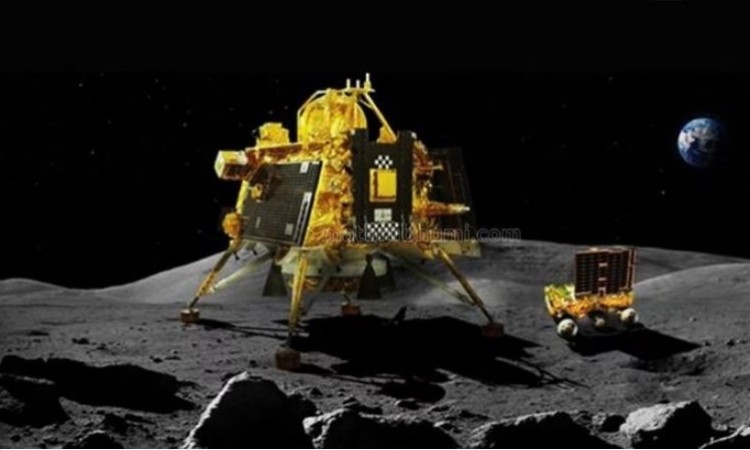
BANGALORE: In a significant stride towards unraveling the mysteries of the moon, Chandrayaan-3’s Pragyan rover has made a groundbreaking discovery. The rover, in the midst of its lunar expedition, has successfully employed its Laser-Induced Breakdown Spectroscopy (LIBS) instrument to conduct pioneering in-situ measurements on the elemental constitution of the lunar surface near the southern pole.
The results of these on-site measurements have confirmed, with undeniable precision, the existence of Sulphur (S) within the designated region. This vital revelation, which was previously unattainable through instrumentation aboard orbiters, was highlighted by the Indian Space Research Organisation (ISRO) in an official statement released on Tuesday.
The LIBS technique, employed in this monumental finding, is a scientific methodology renowned for its ability to dissect the composition of materials through exposure to powerful laser pulses. The procedure involves focusing a high-energy laser pulse onto the material's surface, prompting the generation of an intensely heated and localized plasma. Subsequently, the emitted plasma light is meticulously examined and identified through specialized detectors, such as Charge Coupled Devices. As each element emits distinct wavelengths of light when in a plasma state, the exact elemental constitution of the material is ascertained with remarkable precision.
Preliminary analyses, thoughtfully presented in graphical representations, have brought to light a suite of elements comprising Aluminum (Al), Sulphur (S), Calcium (Ca), Iron (Fe), Chromium (Cr), and Titanium (Ti) on the lunar surface. Further iterations of measurements have intriguingly disclosed the presence of manganese (Mn), silicon (Si), and notably, oxygen (O) as well. The ongoing scientific endeavor is diligently investigating the potential existence of Hydrogen within this lunar region.
The LIBS payload, an innovation stemming from the Laboratory for Electro-Optics Systems (LEOS) under the auspices of ISRO in Bangalore, stands as a testament to India's commitment to pushing the boundaries of space exploration and scientific advancement. This revelation not only augments our comprehension of lunar composition but also accentuates the potential for future revelations and breakthroughs as humanity's exploration of the cosmos advances ever further.
ISRO's Ambitious Plans Post Chandrayaan-3: Sun Mission, Japan Collaboration, and More
Will Chandrayaan-3 Return to Earth? Get Answers to Key Questions Here